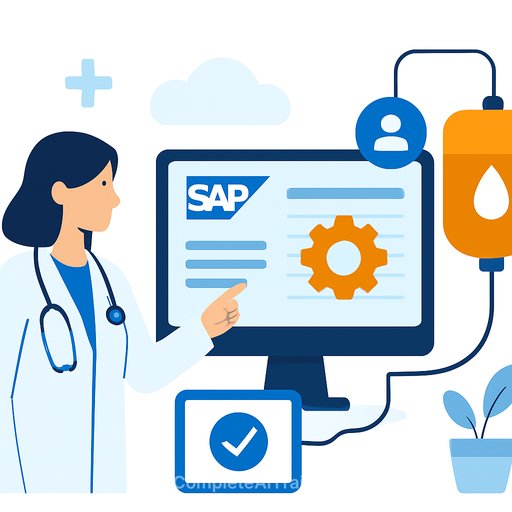Western Health pilots SAP Joule in SuccessFactors to tighten HR processes
Western Health has switched on SAP's AI copilot, Joule, in a test environment to explore practical use cases across its SuccessFactors HR suite. The move is deliberate and paced: test first, validate, then roll out only what sticks.
From disconnected processes to integrated HR
Speaking at SAP HR Connect in Melbourne, workforce systems and projects senior manager Michael Garrett outlined the journey so far. Western Health operates three acute public hospitals and has implemented four SuccessFactors modules: Employee Central, Recruiting Management, Onboarding, and Performance & Goals.
The first three went live in May last year; Performance & Goals followed in February. The change was triggered when the legacy recruitment system was retired, pushing the organisation to start fresh. "We didn't have a HRIS. A lot of our processes were completely disconnected," Garrett said.
What improved
With SuccessFactors, Western Health now has clearer visibility into organisational structure, reporting lines, and workforce data. The team also closed gaps between HR, identity, and IT operations with integrations to Okta and Active Directory, eliminating manual work previously handled by the IT service desk and workforce systems team.
"Now, we have an integration between SuccessFactors, Okta and Active Directory, and all of that is now seamless," Garrett said. Deloitte supported the implementation, and Royal Melbourne Hospital was a key stakeholder due to a shared payroll service.
Faster response to EBA and award changes
Planning and execution for industrial changes has improved. When a new flexible rostering process was introduced under an EBA change, the HR team workshopped with SMEs, built it in test, showcased it, and rolled it out in under two weeks. Before SuccessFactors, that speed wasn't possible.
AI, but with guardrails
Joule has been enabled in test with a "drip feed" approach to use cases. Western Health will move capabilities into production gradually to avoid change fatigue and ensure reliability. "We need to get the balance right between giving the AI tools to our organisation…and ensuring that they work every time," Garrett said.
The team is focused on validation, data protection, and executive backing before enabling features more broadly. Trust and predictable outcomes sit ahead of speed.
What HR leaders can copy now
- Use a retired system or renewal window to reset your HR tech stack and clean up processes.
- Prioritise identity integration early (HRIS → IAM → Active Directory) to cut manual tickets and speed onboarding/offboarding.
- Build an HR test environment playbook: workshop with SMEs, prototype quickly, demo, then release.
- Treat AI as an incremental add-on: enable in test, pick clear use cases, define guardrails, and secure executive sponsorship.
- Measure wins that matter to the business: time-to-implement EBA changes, number of manual tickets removed, data accuracy, and time-to-productivity for new hires.
What's next
Western Health flagged a significant rostering program in the next 12-18 months. Expect the AI and integration work to support that shift, with a focus on reliability, privacy, and operational impact.
Resources
Learn more about SAP's Joule AI copilot for HR on SAP's site: SAP Joule.
Upskilling HR teams on practical AI use cases? Explore role-based options here: Complete AI Training: Courses by Job.
Your membership also unlocks:






